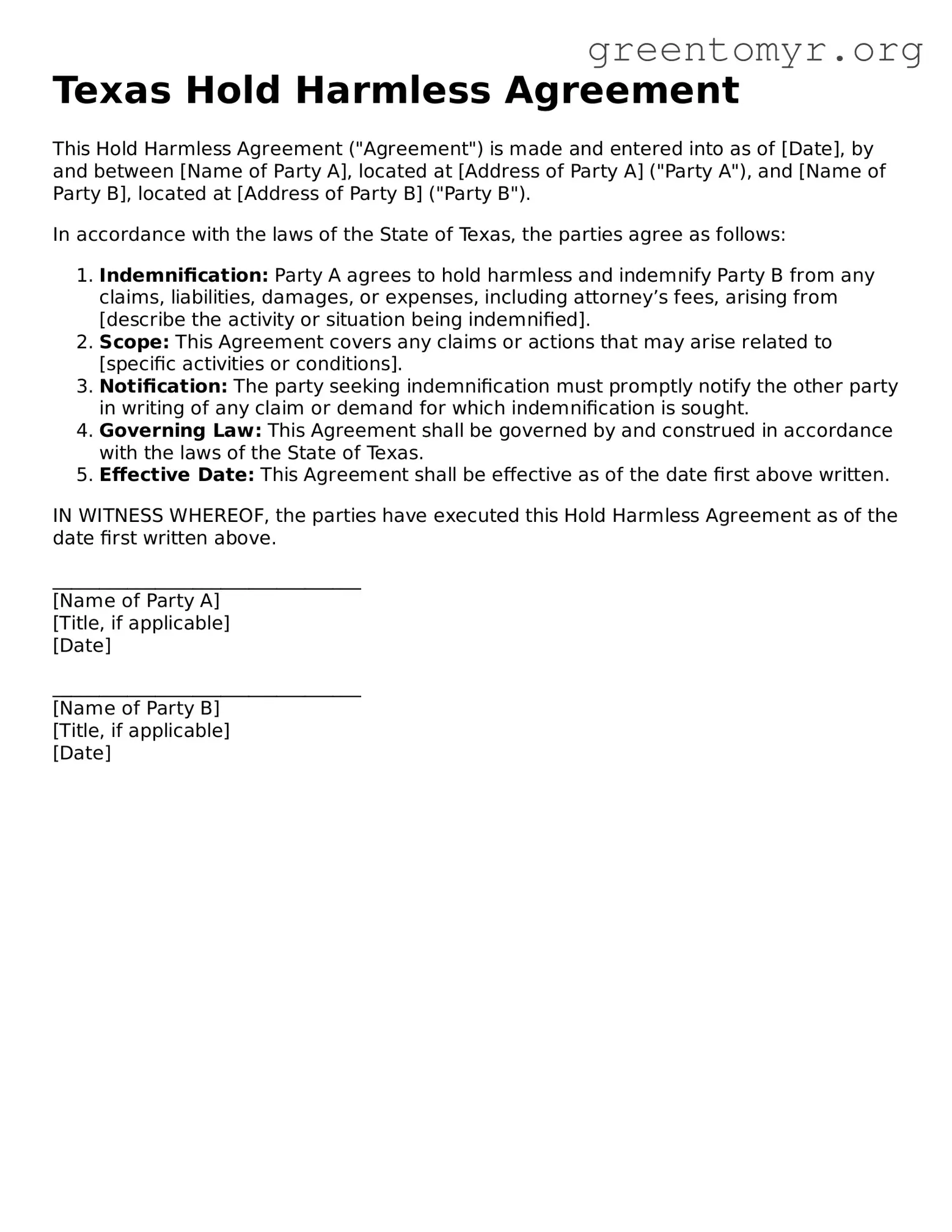What is a Texas Hold Harmless Agreement?
A Texas Hold Harmless Agreement is a legal document that outlines an arrangement between two parties, where one party agrees to take on the responsibility for any liability, damages, or losses incurred by the other party. This agreement is commonly used in various situations, including real estate transactions, construction projects, and event planning, to protect one party from being held accountable for certain risks associated with an activity or property.
Why is a Hold Harmless Agreement important?
This agreement is crucial because it helps clarify the responsibilities and liabilities of each party involved. By signing a Hold Harmless Agreement, individuals and businesses can minimize their exposure to lawsuits and financial claims that may arise from unforeseen incidents. Moreover, it promotes a clear understanding of who is responsible for what in a given situation, reducing the potential for disputes.
Who typically uses a Texas Hold Harmless Agreement?
Various parties may utilize this agreement, including:
-
Property owners renting out spaces for events.
-
Contractors and subcontractors working on construction projects.
-
Individuals hosting gatherings or sports events.
-
Companies entering into business agreements that involve a degree of risk.
What key elements should be included in the agreement?
A well-crafted Texas Hold Harmless Agreement should include several essential components, such as:
-
The names and contact information of the parties involved.
-
A clear description of the activity or service that the agreement pertains to.
-
Specific details regarding the assumption of liability, outlining what liabilities are being waived.
-
The effective date of the agreement.
-
Signatures of both parties, indicating their acceptance of the terms.
Can a Hold Harmless Agreement be enforced in Texas?
Yes, a Texas Hold Harmless Agreement can be enforced as long as it is clearly written, properly executed, and complies with applicable state laws. Courts generally uphold these agreements, provided they do not contravene public policy or involve gross negligence. It is important for both parties to have a mutual understanding of the implications involved.
Is legal advice necessary when drafting a Hold Harmless Agreement?
While it is not strictly required to seek legal advice when creating a Hold Harmless Agreement, doing so is highly recommended. Engaging a legal professional can ensure that the agreement is tailored to meet specific needs and adheres to relevant legal standards. This guidance can also help prevent future disputes and protect both parties' interests.
What happens if a claim arises despite the agreement?
If a claim arises, the enforceability of the Hold Harmless Agreement will largely depend on its terms and the circumstances surrounding the incident. If the agreement is valid, the party who signed it should generally not be held liable for the claims specified. However, exceptions may exist, particularly in cases involving gross negligence or willful misconduct.
Can the terms of a Hold Harmless Agreement be negotiated?
Absolutely. The terms of a Hold Harmless Agreement are negotiable, and it is common for parties to discuss and modify specific provisions before finalizing the document. Open communication is key to reaching an agreement that satisfies both parties and effectively addresses potential liabilities.
How can parties terminate or amend a Hold Harmless Agreement?
To terminate or amend a Hold Harmless Agreement, both parties must agree to the changes in writing. This amendment should outline the specific alterations and should be signed by both parties. If either party wishes to terminate the agreement, they should consult the terms detailed in the original document, as some agreements may specify conditions for termination.
